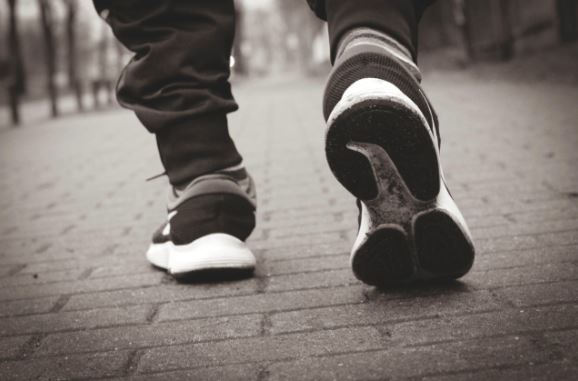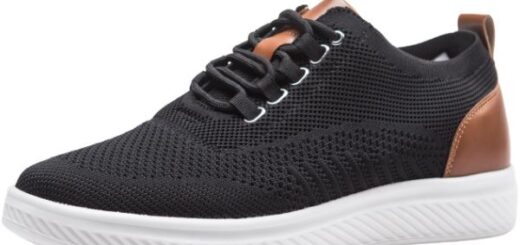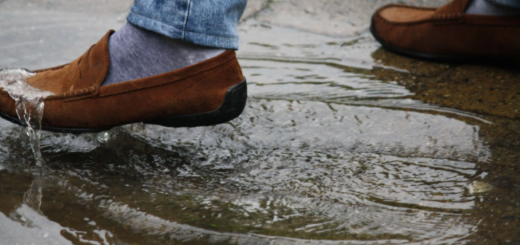When to Replace Your Athletic, Walking, Running, or Exercise Shoes
Athletic shoes play a crucial role in providing comfort, support, and injury prevention during exercise. Whether you are a casual walker, a dedicated runner, or a gym enthusiast, your shoes undergo significant wear and tear. Over time, their ability to provide stability and cushioning diminishes, which can negatively impact your performance and potentially lead to discomfort or injury. Knowing when to replace your athletic shoes is essential for maintaining proper foot health and maximizing the benefits of your workouts. This guide will help you understand the signs of wear and tear, how to test your shoes, and what to look for when purchasing a new pair.
Checking the Soles of Your Shoes
One of the most obvious ways to determine whether it is time to replace your shoes is by examining the soles. The sole of a shoe is the part that makes direct contact with the ground and is subject to the most wear. Depending on your foot type and gait, certain areas may wear down faster than others. For instance, if you notice significant wear in the ball of the shoe and the tread is fading, this is a clear sign that your shoes need replacing. The tread pattern provides grip and stability, so excessive wear can increase the risk of slipping or causing undue stress on your feet.
In addition, uneven wear on the soles may indicate that your shoes are no longer supporting your feet properly. If one side of the sole is more worn than the other, it can lead to imbalances in your gait, potentially causing pain in your feet, knees, or hips. Regularly inspecting the soles and replacing your shoes as needed can help prevent these issues.
Understanding Shoe Mileage

Another important factor in determining when to replace your athletic shoes is the number of miles you have put on them. Most athletic shoes are designed to last between 400 to 600 miles of activity. If you run or walk regularly, you should keep track of your mileage to estimate when your shoes will need replacing.
For example, if you run 20 miles per week, your shoes may last approximately 20 to 30 weeks. If you engage in high-impact activities such as jumping or sprinting, the cushioning and support may break down even faster. Even if your shoes appear to be in good condition, the internal support structures may have deteriorated, leading to reduced shock absorption and increased stress on your joints.
How to Tell If Your Shoe Is Worn Out
Beyond checking the soles and monitoring mileage, there are several physical tests you can perform to determine whether your shoes have lost their functionality. One of the best ways to test a shoe is by bending it. Hold the shoe firmly at the back and front, then try to bend it. A good shoe should bend at the ball of the foot, where your toes join the foot. This is the natural flex point of your foot, and a well-structured shoe should follow this movement.
If the shoe bends in the middle or too easily, it may indicate that the internal support structures have broken down. A shoe that flops and twists excessively is no longer providing the necessary support and stability. Additionally, check the back of the shoe—if the heel counter (the firm part at the back of the shoe) is collapsing or losing shape, the shoe may no longer provide adequate support for your foot.
Another important aspect to check is the upper part of the shoe. Some people wear their shoes in a way that pushes the side out over the sole, even if the bottom still appears intact. If the upper is stretched, torn, or deformed, it can compromise the shoe’s fit and support. Shoes should cradle your foot securely without excessive movement.
Evaluating a New Shoe
When purchasing a new athletic shoe, it is essential to assess its quality before making a decision. Not all shoes provide the same level of support, and choosing the right pair for your needs is important for preventing injuries and enhancing comfort.
Start by testing the flexibility of the shoe. Hold it in both hands and bend it from front to back. The shoe should bend naturally at the ball of the foot, not in the middle. If the shoe is too flexible and bends in the middle, it may lack the necessary support for high-impact activities.
Next, twist the shoe from side to side. A good athletic shoe should have some resistance to twisting. If it easily twists like a piece of taffy, it may not provide adequate lateral support, which is especially important for activities that involve side-to-side movements.

The heel counter should also be firm and maintain its shape when pressed. A stable heel counter helps keep the foot in proper alignment and prevents excessive pronation or supination, which can lead to discomfort and injuries.
Lastly, ensure that the shoe has a proper fit. Try it on with the type of socks you typically wear during exercise. Walk or jog around the store to assess how it feels. Your toes should have some wiggle room, and the shoe should feel snug but not tight.
Identifying a Worn-Out Shoe
To further illustrate the signs of a worn-out shoe, let’s examine an old, heavily used shoe. Even if a shoe comes from a reputable brand, such as New Balance, that does not mean it will last indefinitely. Over time, even high-quality shoes will break down and lose their supportive features.
A worn-out shoe may appear intact at first glance, but testing its flexibility can reveal its deteriorated condition. If the shoe bends in half easily, it likely never had a strong shank or stiffener between the heel and ball in the first place. Shoes without proper support will allow too much movement, leading to instability and discomfort.
Another test is twisting the shoe from side to side. If it lacks resistance and moves too freely, it no longer provides sufficient lateral support. This can be particularly problematic for individuals who engage in activities that require quick directional changes, such as tennis or basketball.
Checking the heel is also important. If the back of the shoe has lost its shape or has been pushed outward, it will not provide the necessary structure to keep your foot in alignment. This can contribute to foot pain and increase the risk of overuse injuries.
Summary
Knowing when to replace your shoes is crucial for maintaining foot health and optimizing performance. By regularly checking the soles, monitoring your shoe mileage, and performing physical tests, you can determine when your shoes have lost their effectiveness.
Investing in a new pair of well-structured athletic shoes can make a significant difference in comfort, stability, and injury prevention. When selecting a replacement, ensure that the shoe bends at the ball of the foot, resists excessive twisting, has a firm heel counter, and provides a secure fit. By taking these steps, you can extend the lifespan of your shoes and continue to enjoy safe and comfortable workouts.
With this information, you are now better equipped to choose the right shoes and know exactly when to replace them, ensuring that your feet stay protected and supported through all your exercise activities.








You have simplified this content. Thanks a lot.